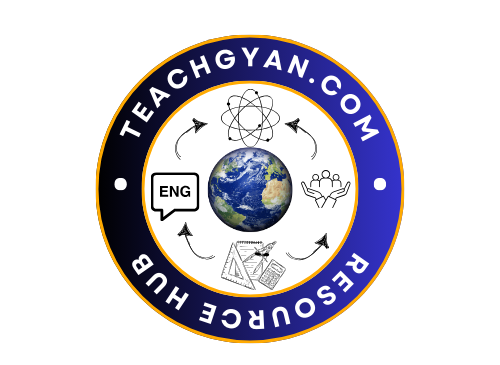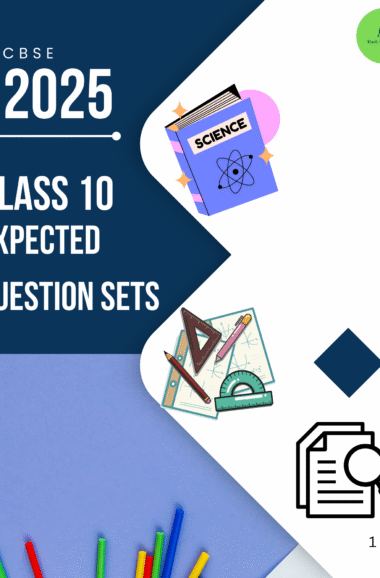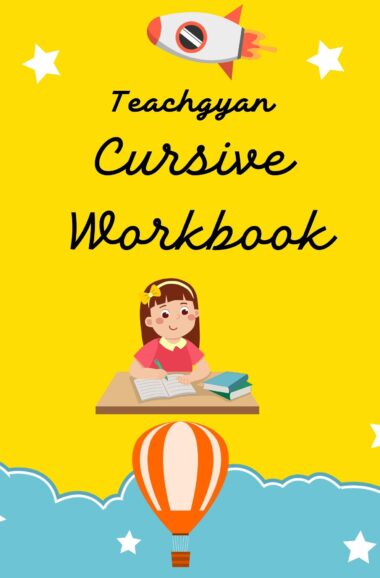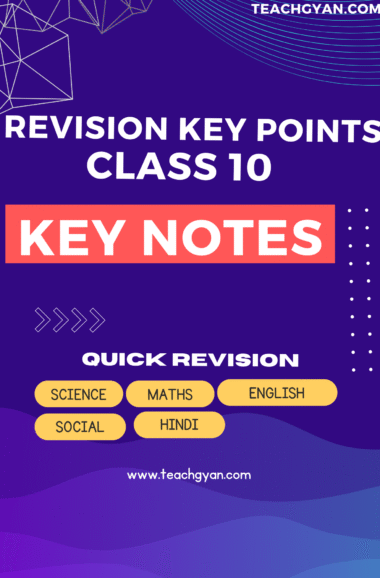BRICKS, BEADS AND BONES
The HarappanCivilization[expand title=”Read More➔” swaptitle=”🠔Read Less”]
Chapter: BRICKS, BEADS, AND BONES – The Harappan Civilization
1. Engage (E1):
Objective: To capture students’ attention and stimulate their thinking about the Harappan Civilization.
Activity: Show a visually appealing image or artifact from the Harappan Civilization, such as the Great Bath or a well-preserved seal. Ask open-ended questions to pique students’ curiosity, like “What do you see in this image?” or “What questions come to your mind when you look at this artifact?”
Time: 15 minutes
2. Explore (E2):
Objective: To provide students with the opportunity to explore and gather information about the Harappan Civilization.
Activity: Divide students into small groups. Provide each group with pictures, maps, and written information about different aspects of the Harappan Civilization, such as urban planning, artifacts, and trade. Ask them to discuss and create a mind map summarizing their findings.
Time: 25 minutes
3. Explain (E3):
Objective: To provide a clear explanation of key concepts and information about the Harappan Civilization.
Activity: Conduct a lecture or use multimedia presentations to explain the history, geography, and major characteristics of the Harappan Civilization. Use visuals, maps, and timelines to enhance understanding. Encourage students to take notes during the explanation.
Time: 20 minutes
4. Elaborate (E4):
Objective: To deepen students’ understanding through activities that require them to apply their knowledge.
Activity: Assign each group a specific aspect of the Harappan Civilization (e.g., trade, technology, daily life) and ask them to create a mini-project or presentation. This could include a skit, a model, or a digital presentation showcasing their understanding. Encourage creativity and critical thinking.
Time: 30 minutes
5. Evaluate (E5):
Objective: To assess students’ understanding of the Harappan Civilization.
Activity: Conduct a quiz or short-answer session based on the information covered during the lesson. Alternatively, ask each group to present their mini-projects and provide feedback. This could also be an opportunity for peer evaluation.
Time: 20 minutes
Homework/Extension:
Assign a research project where students delve deeper into a specific aspect of the Harappan Civilization, such as its decline or the decipherment of the script on the seals. This can be presented in the next class.
This lesson plan follows the 5E model, ensuring engagement, exploration, explanation, elaboration, and evaluation in a systematic and student-centered way. It encourages active participation, critical thinking, and a deeper understanding of the Harappan Civilization.[/expand]
KINGS, FARMERS AND TOWNS: Early States and Economies (c. 600 BCE-600 CE)[expand title=”Read More➔” swaptitle=”🠔Read Less”]
Lesson Plan: Kings, Farmers, and Towns
Objective: Students will understand the socio-economic and political aspects of early states and economies between 600 BCE and 600 CE.
1. Engage (Time: 15 mins)
- Activity: Show a map of the ancient world during the specified period. Ask students to identify key regions and civilizations.
- Objective: To capture students’ attention and activate their prior knowledge.
2. Explore (Time: 20 mins)
- Activity: Divide students into small groups and provide them with primary sources, such as excerpts from ancient texts or archaeological findings related to early states and economies.
- Objective: Encourage students to explore and analyze historical sources, fostering independent thinking and collaboration.
3. Explain (Time: 15 mins)
- Activity: Conduct a brief lecture providing an overview of the key political structures, economic systems, and societal characteristics during the mentioned period.
- Objective: To provide a clear and structured understanding of the historical context.
4. Elaborate (Time: 25 mins)
- Activity: Assign each group a specific civilization from the period and ask them to create a visual representation (poster or PowerPoint) detailing the political, economic, and social aspects.
- Objective: Deepen understanding through creative expression and reinforce key concepts.
5. Evaluate (Time: 15 mins)
- Activity: Individual or group assessments based on a set of questions, discussions, or a short essay related to the chapter.
- Objective: Assess the depth of understanding and critical thinking skills acquired during the lesson.
Explanation of Each E:
1. Engage:
Engaging students at the beginning of the lesson is crucial to pique their interest and activate prior knowledge. In this phase, the map activity serves to stimulate curiosity and create a connection between what students already know and what they are about to learn.
2. Explore:
The exploration phase involves students working collaboratively with primary sources. This hands-on activity allows them to directly engage with historical materials, fostering critical thinking and analysis skills. It also encourages peer-to-peer learning.
3. Explain:
This phase involves a teacher-led explanation, providing a structured overview of the historical context. It helps students grasp the foundational knowledge needed for deeper exploration in subsequent activities.
4. Elaborate:
The elaboration phase encourages students to express their understanding creatively. Creating visual representations of civilizations enhances retention and allows for a more nuanced comprehension of the subject matter.
5. Evaluate:
Evaluation is essential to gauge students’ understanding. It can take various forms, including quizzes, discussions, or creative assessments. This phase helps the teacher identify areas that may need reinforcement or further explanation.
Remember, flexibility is key. Adjust the time allocated to each phase based on the dynamics of the class and the complexity of the topic.[/expand]
KINSHIP, CASTE AND CLASS
Early Society Societies
(C. 600 BCE-600 CE)[expand title=”Read More➔” swaptitle=”🠔Read Less”]
Lesson Title: Exploring Kinship, Caste, and Class in Early Societies
Class: 12
Subject: History
Objective:
Students will understand the social structures of early societies (c. 600 BCE-600 CE), focusing on kinship, caste, and class, and will analyze their impact on the shaping of these societies.
Materials:
- Pictures and visual aids depicting early societal structures
- Textbooks and relevant historical documents
- Whiteboard and markers
- Worksheets for activities
- Projector for multimedia presentations
Engage (Duration: 15 mins):
- Objective: To capture students’ interest and introduce the topic.
- Activity: Picture Analysis
- Display pictures of artifacts, artworks, or illustrations representing early societal structures.
- Ask students to make observations and predictions about the social structures they see.
- Encourage a brief class discussion on what they think these societies were like.
Explore (Duration: 20 mins):
- Objective: To allow students to explore the topic through hands-on activities.
- Activity: Kinship Web
- Provide students with a worksheet containing a family tree.
- Ask them to fill in the family tree with roles and relationships as per their understanding of kinship.
- Discuss their findings and variations within the class.
Explain (Duration: 25 mins):
- Objective: To provide students with the necessary background and knowledge.
- Lecture and Discussion:
- Present a brief historical background of early societies (c. 600 BCE-600 CE).
- Explain the concepts of kinship, caste, and class, emphasizing their roles in societal structures.
- Connect the information with the pictures and activities from the Engage and Explore stages.
Elaborate (Duration: 30 mins):
- Objective: To deepen students’ understanding through more complex activities.
- Group Activity: Caste System Role Play
- Divide the class into groups, assigning each group a specific caste or class from early societies.
- Ask them to prepare a short role play depicting the daily life, interactions, and challenges faced by members of their assigned caste or class.
- Groups present their role plays to the class, fostering discussion and understanding.
Evaluate (Duration: 10 mins):
- Objective: To assess students’ understanding of the topic.
- Assessment:
- Distribute a short quiz or ask students to write a paragraph summarizing the key concepts of kinship, caste, and class.
- Review and discuss the answers as a class.
Homework Assignment:
Ask students to research and write a short essay on how the concepts of kinship, caste, and class have evolved or persisted in modern societies.
Note to the Teacher:
- Encourage active participation and discussion during all stages of the lesson.
- Monitor group activities to ensure all students are engaged.
- Provide constructive feedback during the evaluation stage.
- Relate historical concepts to contemporary issues for a deeper understanding.
This lesson plan aims to cater to different learning styles and engage students actively in the learning process.[/expand]
THINKERS, BELIEFS AND
BUILDINGS
Cultural Developments
(c. 600 BCE – 600 CE)[expand title=”Read More➔” swaptitle=”🠔Read Less”]
Lesson Plan: Thinkers, Beliefs, and Buildings
Chapter: Cultural Developments (c. 600 BCE – 600 CE)
1. Engage (15 minutes)
Objective:
- To activate prior knowledge about cultural developments during the specified period.
Activities:
- Show a series of images related to ancient buildings, artifacts, and philosophical texts on the projector.
- Ask students to discuss in pairs or small groups what they already know about the cultural developments during the mentioned period.
- Collect and discuss responses as a class.
2. Explore (20 minutes)
Objective:
- To introduce students to key concepts and thinkers of the period.
Activities:
- Present a brief lecture or video summarizing the major cultural developments during c. 600 BCE – 600 CE.
- Distribute a handout with key terms, names of thinkers, and important events.
- Organize a gallery walk where students examine and discuss images related to the cultural developments.
3. Explain (20 minutes)
Objective:
- To deepen students’ understanding of the key concepts and ideas.
Activities:
- Conduct a class discussion on the significance of the cultural developments discussed in the previous activity.
- Use a multimedia presentation to explain the role of major thinkers and belief systems of the time.
- Address any questions and provide additional context where needed.
4. Elaborate (30 minutes)
Objective:
- To allow students to apply their knowledge in a hands-on activity.
Activities:
- Divide students into small groups and assign each group a specific cultural development or thinker.
- Ask each group to create a poster or presentation illustrating the key aspects of their assigned topic.
- Encourage creativity and critical thinking in presenting the information.
5. Evaluate (15 minutes)
Objective:
- To assess students’ understanding of the topic.
Activities:
- Have each group present their poster or presentation to the class.
- Facilitate a class discussion where students can ask questions and provide feedback to their peers.
- Assign a short homework assignment or quiz to reinforce key concepts.
Conclusion:
This lesson plan follows the 5E method, providing a structured and engaging approach to teaching the chapter “Thinkers, Beliefs, and Buildings: Cultural Developments (c. 600 BCE – 600 CE)” in a class 12 History curriculum. It incorporates various activities to cater to different learning styles and ensure a comprehensive understanding of the topic.[/expand]
THROUGH THE EYES OF
TRAVELLERS
Perceptions of Society
(c. tenth to seventeenth
century)[expand title=”Read More➔” swaptitle=”🠔Read Less”]
Lesson Title: Unveiling the Past Through Travelers’ Perspectives
Objectives:
- Students will analyze the perceptions of society during the tenth to seventeenth centuries through the eyes of travelers.
- Students will understand the impact of travel narratives on historical understanding.
- Students will develop critical thinking skills in interpreting historical sources.
Materials:
- Pictures and illustrations depicting historical scenes from the tenth to seventeenth centuries.
- Excerpts from travel narratives.
- Whiteboard and markers.
- Handouts with discussion questions.
1. Engage (10 minutes):
Activity: Show a series of pictures representing scenes from the tenth to seventeenth centuries. Ask students to make observations and note down their initial thoughts about society during this period.
Objective: Generate interest and curiosity among students regarding historical perspectives.
2. Explore (20 minutes):
Activity: Distribute excerpts from travel narratives of the period. In small groups, students read and discuss the narratives, identifying key points about society, culture, and interactions.
Objective: Encourage collaborative exploration of historical sources and the extraction of information about societal perceptions.
3. Explain (15 minutes):
Activity: Facilitate a class discussion based on the group activities. Guide students to connect the information gathered from the narratives to the broader historical context. Provide additional context where necessary.
Objective: Help students build a foundational understanding of the societal perceptions during the specified period.
4. Elaborate (25 minutes):
Activity: In pairs, students create a visual representation (poster, infographic, or mind map) illustrating the societal aspects discussed in the narratives. They should use both textual and visual elements to convey their understanding.
Objective: Enhance comprehension through visual representation and promote creativity in presenting historical information.
5. Evaluate (20 minutes):
Activity: Conduct a class gallery walk where each pair presents their visual representation. Encourage students to ask questions and provide constructive feedback.
Objective: Assess the depth of understanding, communication skills, and critical thinking abilities. Evaluate whether the students have achieved the specified learning outcomes.
Homework/Extension Activity:
Ask students to research and bring in more examples of travel narratives from different regions during the same period. Discuss these in the next class to broaden their understanding.
This 5E lesson plan aims to create a dynamic and engaging learning experience, ensuring that students not only grasp historical content but also develop essential skills such as critical thinking and collaboration.[/expand]
BHAKTI –SUFI
TRADITIONS:
Changes in Religious
Beliefs and Devotional
Texts (c. eighth to
eighteenth centuries)[expand title=”Read More➔” swaptitle=”🠔Read Less”]
Lesson Plan: Bhakti-Sufi Traditions
Class: 12th
Subject: History
1. Engage:
- Objective: To introduce students to the historical context and the emergence of Bhakti and Sufi traditions.
- Activity: Picture Analysis
- Show images representing Bhakti and Sufi saints, their followers, and religious practices.
- Discuss with students what they observe and what they infer about the society of that time.
- Time: 15 minutes
2. Explore:
- Objective: To explore the key concepts and figures of Bhakti-Sufi traditions.
- Activity: Reading and Group Discussion
- Assign reading materials on prominent Bhakti and Sufi saints.
- Divide students into groups for discussion and ask them to identify commonalities and differences between the two traditions.
- Time: 20 minutes
3. Explain:
- Objective: To provide a detailed understanding of changes in religious beliefs and devotional texts.
- Activity: Lecture with Multimedia
- Provide a lecture on how Bhakti and Sufi movements influenced religious beliefs.
- Use multimedia presentations to showcase the evolution of devotional texts during this period.
- Time: 30 minutes
4. Elaborate:
- Objective: To deepen understanding through hands-on activities.
- Activity: Analyzing Devotional Texts
- Distribute selected devotional texts from the Bhakti and Sufi traditions.
- Ask students to analyze the texts in terms of language, themes, and the messages they convey.
- Time: 25 minutes
5. Evaluate:
- Objective: To assess students’ comprehension and analytical skills.
- Activity: Group Presentation
- Assign each group a specific aspect (e.g., impact on society, similarities, and differences) to present to the class.
- Evaluate presentations based on content, analysis, and presentation skills.
- Time: 30 minutes
Homework/Extended Learning:
- Objective: To encourage independent research and critical thinking.
- Activity: Research Paper
- Assign a research paper on the long-term impact of Bhakti-Sufi traditions on society and culture.
- Emphasize the importance of using primary and secondary sources.
Conclusion:
This lesson plan follows the 5E method – Engage, Explore, Explain, Elaborate, and Evaluate – to ensure a comprehensive understanding of Bhakti-Sufi traditions. It incorporates various activities to cater to different learning styles and aims to develop analytical skills through the study of religious beliefs and devotional texts.[/expand]
AN IMPERIAL CAPITAL: VIJAYANAGARA (c. fourteenth to sixteenth centuries)[expand title=”Read More➔” swaptitle=”🠔Read Less”]
Lesson Plan: An Imperial Capital: Vijayanagara
Class: 12
Subject: History
Engagement (5 minutes):
Objective: To engage students and activate prior knowledge about the Vijayanagara Empire.
Introduction Activity: Show a series of pictures related to the Vijayanagara Empire on a projector or distribute printed images. Ask students to observe and note down what they see.
Class Discussion: Discuss the images as a class. Encourage students to share their observations and any prior knowledge they have about Vijayanagara.
Learning Outcome: Students will recall prior knowledge and develop interest in the upcoming lesson.
Exploration (15 minutes):
Objective: To allow students to explore the historical context and significance of Vijayanagara.
Activity – Timeline Construction: Provide students with a timeline template and key events related to Vijayanagara. Students, in pairs, research and place these events on the timeline.
Group Discussion: Each group presents their timeline, discussing the events and their importance. Encourage questions and discussions.
Learning Outcome: Students will explore the historical timeline of Vijayanagara and understand its significance.
Explanation (20 minutes):
Objective: To provide a detailed explanation of the key aspects of Vijayanagara.
Lecture & Multimedia: Present a detailed lecture on the political, cultural, and economic aspects of Vijayanagara. Use multimedia resources such as videos or interactive presentations.
Q&A Session: Encourage students to ask questions during and after the lecture to clarify doubts and deepen understanding.
Learning Outcome: Students will gain a comprehensive understanding of Vijayanagara and its historical context.
Elaboration (20 minutes):
Objective: To allow students to delve deeper into specific aspects of Vijayanagara through activities.
Activity – Role Play: Divide the class into groups and assign each group a role to play (e.g., a king, merchant, artisan) in the Vijayanagara Empire. Each group discusses and presents their role in the context of Vijayanagara.
Project Work: Assign a project where students research and present on a specific aspect of Vijayanagara, such as its architecture, administration, or trade.
Learning Outcome: Students will elaborate on specific aspects of Vijayanagara through role play and project work.
Evaluation (10 minutes):
Objective: To assess students’ understanding through a formative assessment.
Quiz: Conduct a short quiz with multiple-choice and short-answer questions related to the key concepts discussed in the lesson.
Discussion: Engage in a brief class discussion to address any remaining doubts or questions.
Learning Outcome: Assess the students’ comprehension of the lesson content.
Homework Assignment:
Ask students to write a short essay on the cultural and architectural contributions of Vijayanagara, highlighting specific examples.
This lesson plan follows the 5E model, ensuring that students are actively engaged, explore historical content, receive a detailed explanation, elaborate on specific aspects, and are evaluated for understanding.[/expand]
COLONIALISM AND THE
COUNTRYSIDE: Exploring
Official Archives [expand title=”Read More➔” swaptitle=”🠔Read Less”]
Lesson Plan: Colonialism and the Countryside: Exploring Official Archives
Class: 12 (CBSE) – History
Chapter: Colonialism and the Countryside: Exploring Official Archives
Engage (E1):
Objective:
- To stimulate students’ interest in the topic and activate their prior knowledge.
- To introduce the concept of colonialism and its impact on the countryside.
Activities:
Picture Analysis (15 minutes): Display pictures related to colonialism and rural life. Ask students to observe and note down their initial thoughts and questions.
KWL Chart (10 minutes): Create a KWL (Know, Want to know, Learned) chart on the board. Have students share what they already know and what they want to learn about colonialism and its impact on the countryside.
Outcome:
- Students will express their initial thoughts on the topic.
- The teacher gains insight into the students’ prior knowledge.
Explore (E2):
Objective:
- To provide students with information about colonialism and its effects on rural areas.
- To encourage critical thinking and analysis.
Activities:
Reading and Discussion (30 minutes): Assign a reading from the textbook about colonial policies affecting the countryside. Facilitate a class discussion on the key points.
Case Study Analysis (20 minutes): Provide students with a case study on a specific village affected by colonial policies. In groups, students analyze the case and discuss the impact on the community.
Outcome:
- Students gain a deeper understanding of the impact of colonialism on rural areas.
- Critical thinking and analytical skills are developed through case study analysis.
Explain (E3):
Objective:
- To clarify and reinforce key concepts related to colonialism and its impact.
- To connect theoretical concepts to real-world examples.
Activities:
Interactive Lecture (20 minutes): Provide a structured lecture on key concepts, using visual aids and examples.
Concept Mapping (15 minutes): Ask students to create a concept map that illustrates the relationships between colonial policies and their effects on rural communities.
Outcome:
- Clear understanding of key concepts.
- Visualization of connections between different aspects of colonial policies.
Elaborate (E4):
Objective:
- To deepen students’ understanding through hands-on activities.
- To encourage independent research and analysis.
Activities:
Archival Research (40 minutes): Introduce students to official archives related to colonial policies. Provide documents for analysis and encourage independent research.
Debate (20 minutes): Divide the class into groups and assign different perspectives (colonial officials, villagers, scholars). Conduct a debate on the impact of colonialism on the countryside.
Outcome:
- Hands-on experience with archival research.
- Enhanced analytical skills through the debate.
Evaluate (E5):
Objective:
- To assess students’ understanding of the topic.
- To provide feedback for further improvement.
Activities:
Quiz (20 minutes): Conduct a short quiz to assess the students’ knowledge of the material covered.
Reflection (15 minutes): Ask students to reflect on what they’ve learned during the lesson and how it connects to the broader historical context.
Outcome:
- Assessment of individual understanding.
- Feedback for both students and the teacher.
Additional Notes:
- Homework: Assign a research project where students explore a specific aspect of colonial policies and their impact on a particular village or region.
- Follow-up: In the next class, discuss the research projects and facilitate a class discussion on the broader implications of colonialism.
This lesson plan integrates activity-based and picture-based learning with the 5E method, providing a comprehensive and engaging approach to teaching the topic.[/expand]
REBELS AND THE RAJ:
1857 Revolt and its
Representations[expand title=”Read More➔” swaptitle=”🠔Read Less”]
Lesson Title: Unveiling the 1857 Revolt: Perspectives and Representations
1. Engage:
- Objective: To stimulate interest and activate prior knowledge.
- Activity: Show a series of paintings and photographs representing the 1857 Revolt. Ask students to share their initial thoughts and feelings about the images.
- Learning Outcomes:
- Students will activate prior knowledge about the 1857 Revolt.
- Students will express their initial perceptions and emotions related to the images.
Time: 15 minutes
2. Explore:
- Objective: To provide students with an in-depth understanding of the events of the 1857 Revolt.
- Activity: Conduct a group activity where students analyze primary sources like letters, diaries, and newspaper articles from that period. Each group will present its findings.
- Learning Outcomes:
- Students will comprehend the events and causes of the 1857 Revolt.
- Students will develop analytical skills by examining primary sources.
Time: 30 minutes
3. Explain:
- Objective: To clarify concepts and provide additional information.
- Activity: Conduct a teacher-led discussion about the different perspectives on the 1857 Revolt. Use a timeline to illustrate key events and discuss the varying viewpoints of rebels and the British.
- Learning Outcomes:
- Students will gain a deeper understanding of the multiple perspectives surrounding the 1857 Revolt.
- Students will be able to analyze historical events critically.
Time: 20 minutes
4. Elaborate:
- Objective: To allow students to apply their understanding in a creative manner.
- Activity: Have students create a visual representation (poster, artwork, or digital media) that captures the essence of the 1857 Revolt from different perspectives – rebel, civilian, British official. This could involve integrating their insights from the primary sources.
- Learning Outcomes:
- Students will apply their knowledge creatively.
- Students will synthesize information from various perspectives to create a comprehensive representation.
Time: 40 minutes
5. Evaluate:
- Objective: To assess the depth of understanding and critical thinking skills.
- Activity: Conduct a class discussion where students present their visual representations and explain the choices they made. Additionally, administer a short quiz or written reflection on the key concepts covered.
- Learning Outcomes:
- Students will demonstrate a nuanced understanding of the 1857 Revolt and its representations.
- Assessment will provide insight into individual comprehension and application of historical concepts.
Time: 25 minutes
Homework:
- Assign a research project where students delve into the historical representation of the 1857 Revolt in literature and popular culture.
Notes:
- Be prepared to guide students in critically evaluating the reliability of historical sources.
- Encourage collaborative learning during group activities.
- Ensure a respectful and inclusive environment for discussions on sensitive historical events.
This lesson plan integrates activities, visuals, and discussions to cater to different learning styles and enhance the overall learning experience.[/expand]
MAHATMA GANDHI AND THE NATIONALIST MOVEMENT:
Civil Disobedience and Beyond[expand title=”Read More➔” swaptitle=”🠔Read Less”]
Lesson Plan: Mahatma Gandhi and the Nationalist Movement
Chapter: Mahatma Gandhi and the Nationalist Movement: Civil Disobedience and Beyond
Objective:
Students will understand Mahatma Gandhi’s role in the Indian nationalist movement, specifically focusing on the Civil Disobedience Movement and its impact on India’s struggle for independence.
Engage (Duration: 10 minutes):
Introduction to Mahatma Gandhi: Start the class with a brief introduction to Mahatma Gandhi, his philosophy, and his contributions to the nationalist movement.
Picture Analysis: Show pictures of key events during the Civil Disobedience Movement. Ask students to describe what they see, encouraging them to make connections between visuals and historical events.
Explore (Duration: 15 minutes):
Reading Activity: Distribute a brief reading on the Civil Disobedience Movement. Ask students to highlight key points and jot down questions.
Group Discussion: Divide the class into groups and assign each group a specific aspect of the Civil Disobedience Movement. Groups discuss their findings and prepare to present to the class.
Explain (Duration: 20 minutes):
Interactive Lecture: Provide an overview of Mahatma Gandhi’s role in the Civil Disobedience Movement. Explain the key events, reasons, and consequences of the movement.
Concept Mapping: Use a concept map to illustrate the interconnectedness of different elements in the movement. This helps students visualize the complex nature of historical events.
Elaborate (Duration: 25 minutes):
Activity-based Learning: Conduct a role-playing activity where students take on the roles of key figures during the Civil Disobedience Movement. This helps them empathize with historical figures and understand the decision-making process.
Primary Source Analysis: Provide excerpts from Gandhi’s writings during the Civil Disobedience Movement. Discuss the significance of these documents and their impact on the movement.
Evaluate (Duration: 10 minutes):
Quiz: Administer a short quiz to assess students’ understanding of key concepts, events, and figures related to the Civil Disobedience Movement.
Class Discussion: Engage the class in a final discussion. Encourage students to share their reflections on the lesson, what they found most interesting, and any lingering questions.
Homework/Assignment:
Assign a reflective essay where students analyze the effectiveness of nonviolent resistance in the context of the Civil Disobedience Movement.
Conclusion:
This lesson plan aims to engage students through visuals, readings, discussions, and activities, fostering a deep understanding of Mahatma Gandhi’s role in the nationalist movement, particularly during the Civil Disobedience Movement.[/expand]
FRAMING THE
CONSTITUTION:The Beginning of a New Era[expand title=”Read More➔” swaptitle=”🠔Read Less”]
Lesson Title: Framing the Constitution: The Beginning of a New Era
Class: 12 (CBSE)
Duration: 60 minutes
Objectives:
Cognitive Objective:
- Understand the historical context and significance of the framing of the Indian Constitution.
- Analyze the key features and principles of the Indian Constitution.
Affective Objective:
- Develop an appreciation for the complexities involved in drafting a constitution.
- Recognize the role of various leaders in the Constituent Assembly.
5E Lesson Plan:
1. Engage (15 minutes):
Activity: “Timeline Construction”
- Provide students with a timeline of major events leading to the framing of the Indian Constitution.
- Students work in groups to arrange key events in chronological order.
- Discuss as a class to ensure a collective understanding of the context.
Picture-Based Learning:
- Display pictures of leaders like B.R. Ambedkar, Jawaharlal Nehru, and others involved in the framing process.
- Ask students to observe the pictures and discuss what they infer about the role of these leaders.
Objective: Introduce the historical context and key figures involved in framing the constitution.
2. Explore (15 minutes):
Activity: “Constitutional Principles Collage”
- Provide each group with a set of constitutional principles (like justice, equality, fraternity).
- Students create a visual collage representing these principles using pictures, symbols, and brief descriptions.
- Each group presents their collage to the class.
Objective: Deepen understanding of constitutional principles and their visual representation.
3. Explain (10 minutes):
Teacher-led Discussion:
- Briefly explain the challenges faced by the Constituent Assembly.
- Discuss the key debates and resolutions during the framing process.
Objective: Provide a comprehensive overview of the complexities faced during the framing of the constitution.
4. Elaborate (10 minutes):
Activity: “Constituent Assembly Simulation”
- Divide students into roles representing members of the Constituent Assembly.
- Each group discusses and debates a specific aspect of the constitution (e.g., Fundamental Rights).
- Encourage active participation and exchange of ideas.
Objective: Develop a deeper understanding of the debates and compromises in the Constituent Assembly.
5. Evaluate (10 minutes):
Assessment Task:
- Assign a short essay or quiz assessing the students’ understanding of the key features and principles of the Indian Constitution.
- Encourage critical thinking and analysis.
Objective: Evaluate the students’ grasp of the content and their ability to apply knowledge.
Conclusion:
- Recap the key points.
- Highlight the enduring significance of the Indian Constitution in shaping the nation.
This lesson plan aims to engage students actively through activities, visuals, and simulations, fostering a comprehensive understanding of the framing of the Indian Constitution.[/expand]






Explain the objective of the lesson for the learners in an excellent way
Very nicely explained, easy to interpret